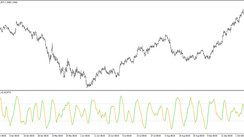Exploring Long-Term Trading
Long-term trading embodies an investment methodology where market participants retain assets for at least a year. This investment strategy presents a stark contrast to short-term trading, where assets are usually held for under a month.
Various factors prompt investors to pursue long-term trading. Firstly, it's seen as a method of risk mitigation. Historically, the stock market has shown an upward trajectory over extended periods, implying that long-term stockholders are likelier to gain profits despite temporary market variations.
Another allure of long-term trading is the potential to reap the benefits of compound interest - the phenomenon of accruing interest on previously earned interest. This becomes a reality when assets are held over considerable timeframes, substantially boosting returns.
Upsides of Long-Term Trading
Long-term trading carries several benefits. Key among them are:
-
Risk Management: As stated before, long-term trading potentially lessens risk. Long-term stockholders stand to gain, provided the historically upward trend of the stock market persists, despite short-term market volatilities.
-
Potential for Greater Returns: Compound interest could considerably enhance returns over time, making long-term trading potentially lucrative.
-
Minimal Time Investment: Compared to short-term trading, long-term trading requires less frequent market monitoring, given the extended asset holding duration.
Downsides of Long-Term Trading
Nevertheless, long-term trading is not without its drawbacks. Some noteworthy ones include:
-
Risk of Losses: Despite the risk-reducing attribute of long-term trading, the possibility of incurring losses persists since the stock market can dip in the short term.
-
Illiquidity: Long-term investments tend to lack liquidity, which could pose a challenge when quick asset liquidation is necessary.
-
Tax Considerations: There may be tax consequences associated with long-term investments, such as capital gains tax when you decide to sell.
Long-Term versus Short-Term Trading
The most distinguishable difference between long-term and short-term trading is the duration assets are held. Long-term traders hold assets for at least a year, whereas short-term traders do so for usually under a month.
In terms of strategy, long-term traders largely rely on fundamental analysis, examining a company's financials and various other parameters to gauge its true worth. On the other hand, short-term traders typically lean on technical analysis, utilizing historical price trends and market data to spot trading possibilities.
Instances of Profitable Long-Term Trading
Historically, numerous instances highlight the profitability of long-term trading. Consider the S&P 500 index, which has surged over 100% in the past decade. Thus, investors who held stocks in this index over the last ten years have profited.
Apple provides another compelling example. Over the previous decade, Apple's stock price soared by over 1,000%, signifying significant profits for investors who bought Apple stock ten years ago.
Expert Opinions on Long-Term Trading
Industry professionals typically endorse long-term trading as an effective investment strategy, albeit with a caveat: success is not guaranteed. Long-term traders should be willing to weather short-term market swings and maintain a long-term investment perspective.
Concluding Thoughts
Although long-term trading has the potential to be a successful investment approach, it's crucial to comprehend the inherent risks. Investors should meticulously evaluate their investment objectives and risk appetite prior to delving into long-term trading.





